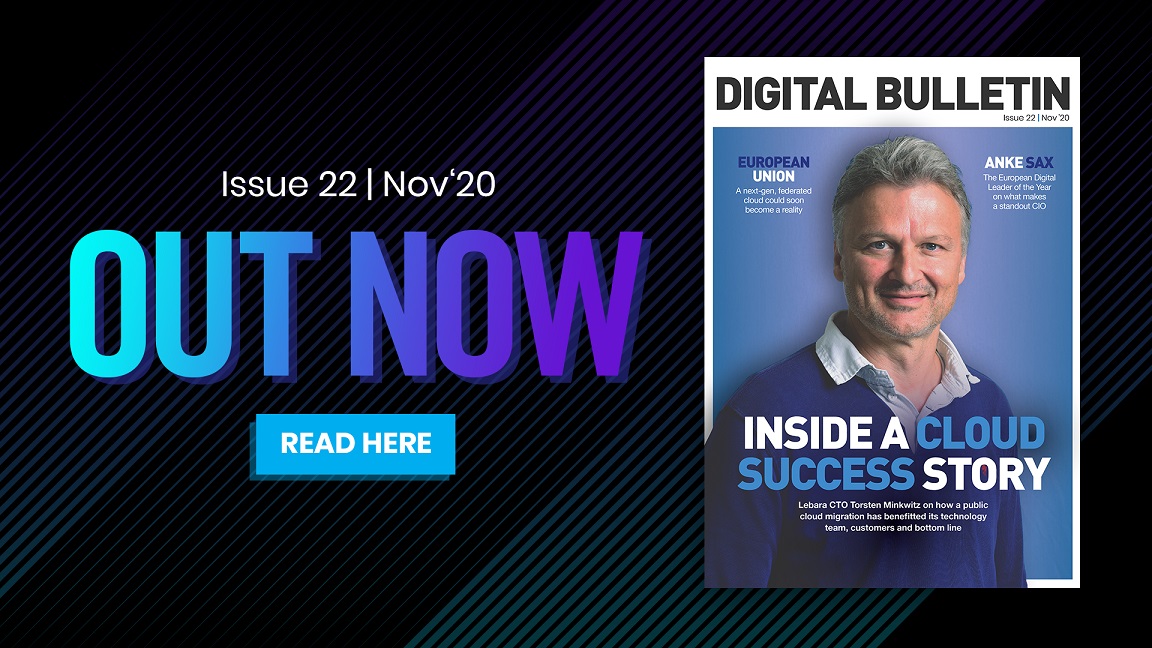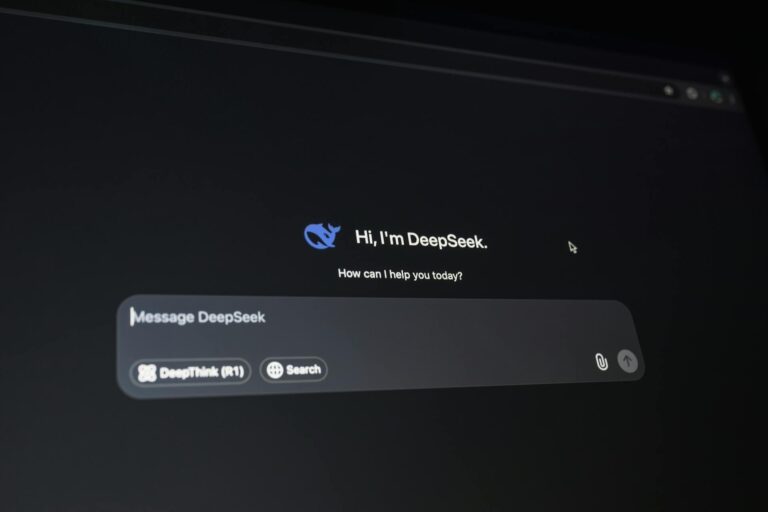
There have been few more decorated CIOs over the past couple of years than Anke Sax. The German has spent 30 years working in the financial sector, split between business functions and, more latterly, the IT side.
Having taken the role of CIO of dwpbank in Germany in 2017, Sax’s work quickly caught the eye as she went about introducing strategic change and cultural realignment, while also overseeing a large-scale migration programme and modernising the organisation’s system architecture.
The work saw Anke named as German CIO of the Year 2019 and then the European Digital Leader of the Year 2020 for the financial sector. The awards have boosted Sax’s profile and given her a platform to deliver her message to a captive audience.
“It’s very satisfying that the community sees that I’m trying to drive digital transformations, especially when a lot of business guys just want the CIO to be an IT lead,” she tells Digital Bulletin.
“If you are a CIO and you put across your opinion about speeding up transformations, it is much easier to do so with this kind of profile. You’re invited to speak at events or take part in discussions and really get your message across, which is hugely powerful.”
Sax is hugely passionate about the role of the CIO and its importance to leading digital transformations for enterprise. Speaking to her peers, her message has been that, as a collective, CIOs must become “more pushy”, moving the role beyond that of an IT lead and being on the same level as their c-suite counterparts.
An exasperation at CIOs being considered simply as IT leads comes up on more than once during our near-hour-long discussion. At one point, Sax says fewer than 10% of CIOs are really fulfilling that role.

“That’s not because they are not able to, but because they aren’t being allowed to,” she says, pointedly.
All of which goes some way to explaining why Sax left her role at dwpbank earlier this year.
“It wasn’t really in my thoughts to take a step back or have a sabbatical, but rather the situation, which is a misunderstanding of what a digital transformation is,” she says. “I tried to push and explain, but I didn’t feel like it was being listened to, which was very frustrating.
“In the end, I said: ‘Do it your way, but I want to do it differently’. It wasn’t a way I wanted to work. I want to work with teams that have energy and belief in digital transformations.”
There appears to be no bitterness or major falling out, just simply a difference in philosophies, which Sax was no longer prepared to accept.
“I’m really clear that I want to be a CIO, and if a company is looking for an IT lead, then they should look elsewhere,” she says.“It’s important we understand how critical digital transformation is across Europe, and I act a bit like a lobbyist for digital transformation. As CIOs, we have to be more forceful with others and not just accept a role of being an IT lead.”
In terms of knowing what makes a CIO tick, there are few people more qualified than Sax, who spoke to no less than 40 as part of her PhD in an attempt to dig into how successful digital leaders manage their teams and projects.
“A CIO is a leader, but also a visionary, strategist; somebody who can deliver,” she enthuses, leaning into the screen as she does so. “As a good leader you have to be a good listener and ask people their opinions, whether that’s colleagues, customers or staff members. That really helps bring together a collective strategy, not just your own.
“I see people who think being a good leader is about talking all of the time, but when I’m in a steering committee I don’t look to talk unless I have to because it’s more important to listen. That’s important to forming teams and gaining trust.”
It’s important we understand how critical digital transformation is across Europe, and I act a bit like a lobbyist for digital transformation
Not for the first time during the interview, Sax draws on a footballing parallel, reeling off some of the world’s leading managers, all of whom just happen to be German.
“It’s a bit like football, [Hansi] Flick, [Jürgen] Klopp, [Thomas] Tuchel – they are able to form teams and that is the essence of a good leader. As a CIO you should be able to have a strategy and put all the information and your knowledge of technology and the business together and then advise and consult about the best solution to work forward.
“As with football, there is a system and everyone knows their role in the team. But you have to be adaptable, so if you play against Chelsea, you have to play differently than you would against Bayern Munich.”
The management and mentoring of people is something that Sax clearly misses, despite leaving her previous role just a few months ago. She cites empirical studies that have consistently shown over the past 50 years that people are most effective when they have a target they understand and can work towards.
“It has been proven that it is important that people know where to go,” she says. “They need a target, and for me that is about strategy. People need a target they can believe in and they know that they are important in reaching that target. Give them a platform to shine and tell them when they do.
“It is so important to treat people as adults and not as kids; people don’t need to be told exactly what it is they have to do, which is a mistake managers make. People are usually very aware of what it is they have to do and if they’re not then I haven’t done my job properly.”
But just as important for a CIO is navigating an increasingly complex technology landscape. A common mistake that CIOs should look to avoid, says Sax, is implementing expensive new technologies before conducting a thorough analysis of the needs of the business.
“Something I see a lot but that I really don’t like is people saying they have an AI strategy or a cloud strategy or a blockchain strategy. It is much more important that you have an overall strategy about where you want to go. From there you can decide if AI is the right technology for you, or if cloud is the best idea to help.
“I see so many people going down the road of having AI and blockchain and cloud and big data because they think it is hip. All these technologies can change a business but it depends on what your business needs. For some, it’ll be AI, but for others it will be blockchain.
“For example, if you don’t have good data, don’t bother thinking about AI because that’s not going to work. Start with your data. As a CIO, or even a CEO or COO, think about where it is you want to go then think about the tools you’re going to need to get there. Really focus and deliver, that is the best way to achieve success.”
With our conversation drawing to a close, Sax addresses the million-dollar question: just what will it take for her to jump back into a new role?
“What I want is a challenging role where I can drive a digital transformation as CIO or with a partner who views IT in the same way that I do,” she says.
“I love to make change happen and I love to lead people and help them to shine. That’s what I really miss. I want to have a challenging role where I am allowed to lead change.”
You have to think Sax won’t be short of offers.



